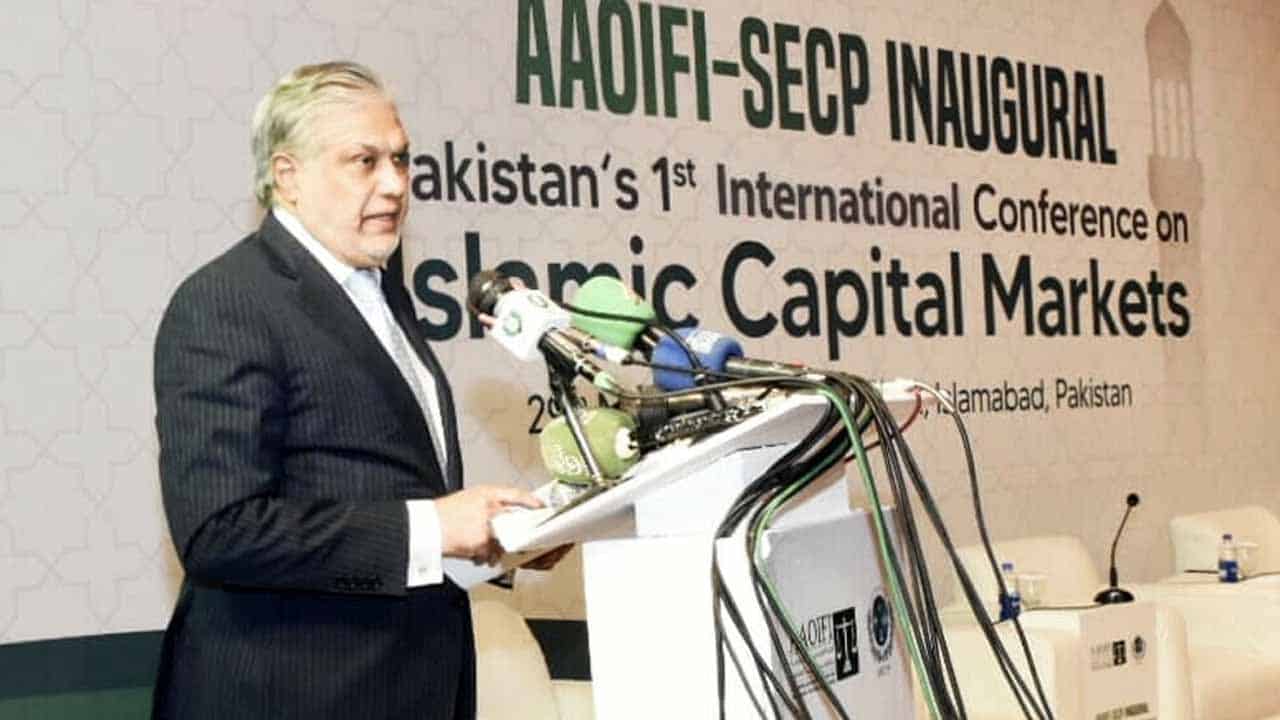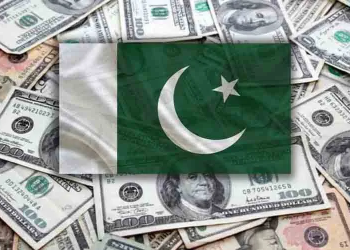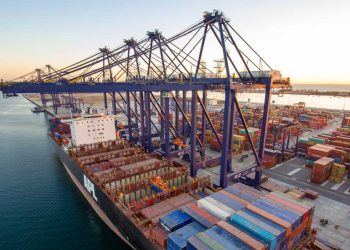According to Finance Minister Ishaq Dar, over 21% of Pakistani banks have been aligned with Islamic regulations as a result of policymakers’ concerted efforts.
Speaking at Pakistan’s first international conference on “Islamic Capital Markets,” which was co-hosted by the Security and Exchange Commission of Pakistan (SECP) and the Accounting and Auditing Organisation for Islamic Financial Institutions (AAOIFI), he stated that the banks that had converted to the Islamic system were completely satisfied and wanted to continue using it.
According to the finance minister, a strategic plan is in place to establish a thriving Islamic financing system, for which the government has already devised a “National Financial Inclusion Strategy” that covers the key areas.
According to Ishaq Dar, Pakistan is one of the few countries with a well-developed regulatory environment for microfinance institutions, and the SECP and State Bank of Pakistan (SBP) have done well in this area.
“Pakistan has a comprehensive system of Zakat collection and distribution at both the private and public levels,” he continued.
He stated that the Islamic financial services industry, which included Islamic institutions such as Mudarabah, Islamic non-banking financial institutions, Shariah-compliant firms, and Shariah consultants, operated under the SECP’s regulatory preview.
According to the minister, the size of Islamic financial institutions in Pakistan is expected to exceed $42 billion by 2022, with assets and deposits totaling Rs 7.2 trillion and Rs 5.2 trillion, respectively.
“Assets of the Islamic banking industry increased by 29 percent year on year in the fiscal year 2022; and the network of the Islamic banking industry consists of 22 Islamic banking institutions,” he said, adding that six of the 22 banks were full-fledged “Islamic banks” and 16 conventional banks had stand-alone Islamic banking branches.
To further strengthen the Shariah-compliant framework and harmonize Shariah practices in the Islamic banking industry, the SBP adopted four more Shariah-standard accounting and auditing organisations for Islamic financial institutions in July 2022, bringing the total number of Shariah-compliant entities to 20.
According to the Islamic Finance News of Malaysia, Ishaq Dar stated that the SBP has been reorganised to be the best central bank in the world by 2022 for promoting the Islamic financing system.
The existing government, according to the minister, is committed to developing the Islamic finance system in letter and spirit, as well as completing the “goals of transformation” within the five-year deadline set by the Federal Shariah Court.
He stated that there were around 1,679 Islamic financial institutions, including 560 Islamic banks, operating in 76 countries with a total asset value of Rs4 trillion and rising at a rate of 17 percent year on year.
Overall, according to Ishaq Dar, the Islamic Finance Development Indicator (IFDI), the Global Islamic Finance Industry (GIFI) would rise to $5.9 trillion by 2026, up from $4 trillion in 2021.
“Mainly driven by its biggest segments like Islamic banks and Sukuk bonds for the Islamic financing industry, Malaysia, Saudi Arabia, Singapore, South Africa and Jordan seemed to top. ”
The finance minister said Pakistan is ‘thriving hard’ to significantly enhance its share and “I am confident that with the help of all of you and professional technical experts, we will be able to achieve this objective, Inshallah,” he expressed optimism while addressing the conference participants.
Highlighting the importance of holding the Islamic Capital Markets Conference, he said it would help determine the future direction and give the fast-changing dynamics of the market.
According to Ishaq Dar, the Islamic Finance Service sector is one of the fastest expanding areas of the global financial system, having emerged as a viable tool for funding development globally, especially in non-Muslim nations.
He believed that major financial markets provided compelling proof that Islamic finance had already been mainstreamed alongside the global financial system and had the potential to address the difficulties of extreme poverty and move toward prosperity.






